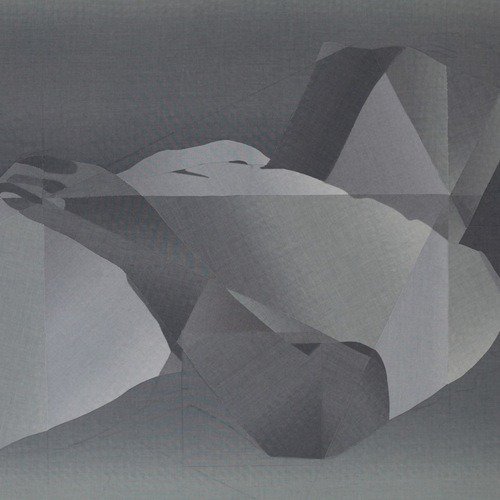Twofold
dal 30/9/2014 al 21/10/2014
Segnalato da
Keith Boadwee & Club Paint
Eduardo Consuegra
Alika Cooper
Jason Meadows
Nikhil Murthy
Adrian Paules
Owen Schmit
Lia Trinka-Browner
30/9/2014
Twofold
South of Sunset, Los Angeles
The exhibition features a group of thoughtful, skilled artists who have compelling relationships with fragmentation and re-arrangement.

Curated by Lia Trinka-Browner
Keith Boadwee & Club Paint
Eduardo Consuegra
Alika Cooper
Jason Meadows
Nikhil Murthy
Adrian Paules
Owen Schmit
Somewhere there exist all the possible variations of all the possible people I could be. I could be any of them — but I cannot be all. I can only be one of the variations. I will be the variation of myself that pleases me the most. — David Gerrold
In 1973, David Gerrold published his science fiction novel, The Man Who Folded Himself, a time-loop scenario in which the main character travels back and forth via the gift of a “timebelt”, doubling himself over again with every jump, eventually beginning sexual relationships with various male and female versions of himself and ultimately questioning the very fundamental psychology that goes hand-in-hand with time travel imagination. It reads like a diary, but prompts questioning of some fascinating concepts; reproduction by almost schizophrenic rearranging; the molding, folding, cutting up and changing a timeline; the self and our determinate timeline as mutable; the trouble with getting the do-over.
Like other manifestations of folding time in popular culture, (Robert Heinlein’s short story —All You Zombies—, or more popularly, films like Groundhog Day, Looper, Back to the Future or the television show Fringe) The Man Who Folded Himself deals with some obvious ontological time travel paradoxes. And while the book asks these general questions of multiple existences, what’s also interesting is not just the science fiction element of doubling one’s self (arguably a metaphor for creating anything), but the language used to describe time as material; fabric, planes, wrinkles and folds.
Folding, as a concept, inherently contains the idea of transformation, like origami or Al Jaffee’s iconic Mad Magazine fold-in page. A new and different form is created from the first. Other textual ideas are intrinsically related to folding, but vary in method, like the “cut-up technique”, which is the process of rearranging or cutting up language to form a new text (made popular by William S. Burroughs who points to T.S. Eliot’s The Wasteland, and Dadaism before that as making “cut-ups”), as well as pairing disruptive imagery side-by-side to create a whole new context.**
TWOFOLD is an exhibition that looks askew at the concept of folding. It features a group of thoughtful, skilled artists who have compelling relationships with fragmentation and re-arrangement and their practices engage on various levels with the idea of cutting-up and putting-back-together. Some relationships are humorous and others, intimate. Some are brash and colorful, while others are subtle and powerful. The undercurrent of the exhibition is the interesting variations and layers these works create in a space together.
— Lia Trinka-Browner
** See (or Google) William Burrough’s and Antony Balch’s 1966 film “The Cut Ups”
Lia Trinka-Browner is a writer and curator living in Los Angeles
Image: Alika Cooper Sleeper, 2014 (detail)
Opening reception: Wednesday, October 1, 8 to 10 pm
South of Sunset
1218 Temple Street - Los Angeles, CA 90026
Gallery hours: Sundays 1 to 4 pm and by appointment



